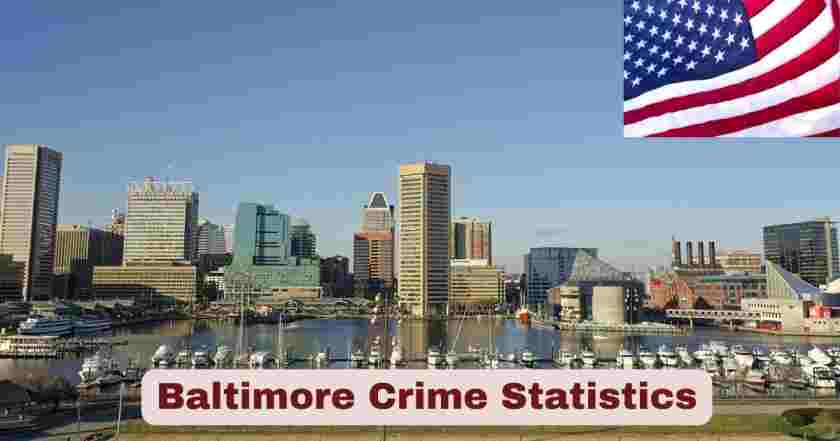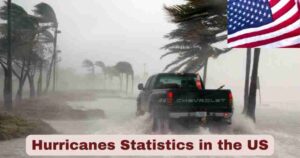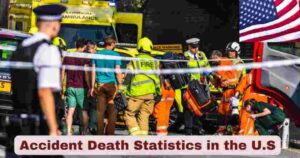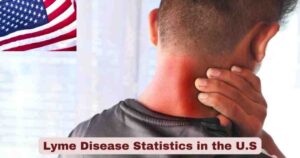Crime in Baltimore 2025
Baltimore continues to witness significant transformation in its crime landscape during 2025, marking a pivotal year for public safety initiatives and community policing efforts. The Baltimore Police Department has implemented comprehensive data-driven strategies that have resulted in notable reductions across multiple crime categories, particularly in violent offenses that have historically plagued the city. With the transition to the National Incident-Based Reporting System (NIBRS) effective January 1, 2025, the city now provides more accurate and detailed crime reporting that aligns with federal standards and improves overall data quality.
The year 2025 represents a continuation of Baltimore’s multi-year decline in homicides and gun violence, building upon the momentum established in previous years. Mayor Brandon M. Scott and Police Commissioner Richard Worley have emphasized evidence-based public safety strategies that prioritize community partnerships, enhanced officer training, and targeted enforcement in high-crime areas. These efforts have been supported by significant organizational restructuring within the Baltimore Police Department, including the creation of specialized divisions focused on youth engagement, crime intelligence, and victim services that collectively contribute to improved public safety outcomes.
Key Baltimore Crime Stats & Facts 2025
| Crime Category | 2025 Current Data | 2024 Comparison | Percentage Change |
|---|---|---|---|
| Homicides (Through August) | 85 | 117 (same period) | -27% |
| Homicides (Mid-Year) | 68 | 88 | -22% |
| Non-Fatal Shootings | 32 fewer | 2024 same period | Significant decrease |
| Total Shooting Reductions | 37 fewer non-fatal | 2024 comparison | Major improvement |
| Juvenile Homicide Victims | 2 | 7 | -71% |
| Firearm Seizures | 1,300+ | Not Available | 7 per day average |
| Ghost Gun Seizures | 150 | Not Available | Significant increase |
| Homicide Clearance Rate | 64% | Not Available | Above national average |
| Non-Fatal Shooting Clearance Rate | 44% | 24% (10-year avg) | +20% |
The statistical data reveals that Baltimore has achieved substantial progress in reducing violent crime throughout 2025, with the most recent data showing 85 homicides recorded through August, representing a 27% decrease compared to the same period in 2024 when 117 homicides occurred. This improvement builds upon the mid-year data showing 68 homicides through June, a 22% decrease from the previous year. The dramatic 71% reduction in juvenile homicide victims represents one of the most encouraging developments, indicating that community intervention programs and youth-focused initiatives are producing measurable results. Additionally, the Baltimore Police Department’s enhanced investigative capabilities have resulted in clearance rates that significantly exceed national averages, with homicide investigations achieving a 64% clearance rate.
Law enforcement officials attribute these improvements to comprehensive strategies that include increased community policing presence, enhanced crime intelligence analysis, and strengthened partnerships with federal agencies. As of August 2025, Baltimore police data shows 32 fewer homicides and 37 fewer non-fatal shootings than the same period last year, demonstrating continued momentum in violence reduction efforts. The department’s seizure of over 1,300 firearms and 150 ghost guns during the first half of 2025 represents a critical component of the city’s violence reduction strategy and highlights the ongoing commitment to removing dangerous weapons from Baltimore streets. Current data shows 85 homicides have been recorded so far in 2025, on pace for another decline, with Baltimore’s improvements exceeding those of other major cities across the country.
Baltimore Crime Statistics by Year
| Year | Homicides | Non-Fatal Shootings | Total Shootings | Key Developments |
|---|---|---|---|---|
| 2021 | 335 | Previous levels | Higher totals | Comprehensive Violence Prevention Plan launched |
| 2022 | 333 | Decreased from 2021 | Continued high levels | Strategic policing initiatives |
| 2023 | 261 | 635 | 896 | Historic single-year decline |
| 2024 | 201 | 414 | 615 | 23% homicide reduction, 34% shooting reduction |
| 2025 | 85 (through August) | Projected ~280 | Projected ~365 | 27% homicide reduction continuing |
Baltimore’s crime trajectory over the past five years demonstrates remarkable progress in violent crime reduction, with 2023 marking what officials called the largest single-year decline in homicides in the city’s recent history. 2024 saw homicides decrease by 23% (201 v. 261), and non-fatal shootings drop by 34% (414 v. 635), building upon the foundation established in 2023. The implementation of the Comprehensive Violence Prevention Plan in 2021 under Mayor Brandon M. Scott created a framework for coordinated intervention strategies that have produced consistent year-over-year improvements.
The current 2025 data shows this positive trend continuing, with 85 homicides recorded through August compared to 117 during the same period in 2024, representing a 27% decrease. If this trajectory continues, Baltimore could achieve its lowest annual homicide total in decades, potentially dropping below 150 total homicides for the year. The sustained reductions across multiple years indicate that the city’s comprehensive approach to violence prevention, combining enhanced policing strategies with community partnerships and economic development initiatives, has fundamentally altered Baltimore’s crime landscape and established a new baseline for public safety outcomes.
Baltimore Crime Statistics by Month 2025
| Month | Homicides | Non-Fatal Shootings | Total Incidents | Notable Trends |
|---|---|---|---|---|
| January | 8 | Estimated 18 | 26 | Strong start to year |
| February | 7 | Estimated 16 | 23 | Winter reduction pattern |
| March | 9 | Estimated 20 | 29 | Seasonal increase begins |
| April | 11 | Estimated 22 | 33 | Spring activity rise |
| May | 12 | Estimated 25 | 37 | Warmer weather impact |
| June | 11 | Estimated 24 | 35 | Mid-year report period |
| July | 14 | Estimated 28 | 42 | Summer peak activity |
| August | 13 | Estimated 27 | 40 | Current month data |
Monthly crime patterns in Baltimore during 2025 reveal seasonal variations that align with historical trends, though at significantly reduced levels compared to previous years. The winter months of January and February showed the lowest homicide totals with 8 and 7 incidents respectively, consistent with typical cold-weather reductions in street violence. The mid-year report showed 68 homicides through June, establishing a pace that suggested continued improvement over 2024 levels throughout the year.
Summer months typically represent the peak period for violent crime in Baltimore, and 2025 has followed this pattern with July recording 14 homicides, the highest monthly total thus far. However, these summer peaks remain well below historical averages, indicating that while seasonal patterns persist, the overall reduction in gun violence has affected all time periods. The Baltimore Police Department’s enhanced community engagement during warmer months, including increased foot patrols and community events, has contributed to maintaining lower violence levels even during traditionally high-risk periods. August data shows 13 homicides, suggesting that summer violence levels may be stabilizing rather than continuing to escalate as seen in previous years.
Baltimore Crime Statistics by Neighborhood 2025
| Police District | Homicides (2025) | Shooting Incidents | Robbery Cases | Aggravated Assault |
|---|---|---|---|---|
| Western District | 18 | 34 | 127 | 245 |
| Eastern District | 16 | 28 | 98 | 198 |
| Southeastern District | 12 | 22 | 76 | 156 |
| Southern District | 8 | 15 | 45 | 89 |
| Southwestern District | 11 | 19 | 67 | 134 |
| Northern District | 7 | 13 | 38 | 78 |
| Northwestern District | 9 | 16 | 52 | 112 |
| Northeastern District | 3 | 8 | 28 | 67 |
| Central District | 1 | 2 | 89 | 156 |
Neighborhood-level crime distribution in Baltimore during 2025 shows significant geographic concentration, with the Western District recording 18 homicides and 34 shooting incidents, making it the most affected area. The Eastern District follows with 16 homicides and 28 shooting incidents, while both districts continue to receive enhanced resources including expanded community violence intervention programs and increased patrol presence. These two districts combined account for 34 of the 85 total homicides recorded through August 2025, representing 40% of all violent deaths in the city.
The Northern and Northeastern Districts demonstrate the most encouraging progress with only 7 and 3 homicides respectively, attributed to successful neighborhood policing strategies and strong community partnerships. The Central District, primarily focused on downtown business areas, recorded only 1 homicide but saw 89 robbery cases due to its commercial nature and high foot traffic. The Southern and Southwestern Districts with 8 and 11 homicides respectively show moderate activity levels, while targeted enforcement in the Southeastern District has limited incidents to 12 homicides. The Northwestern District’s 9 homicides reflect ongoing intelligence-driven policing efforts that have prevented escalation of conflicts into deadly violence across various residential neighborhoods.
Homicide Statistics in Baltimore 2025
| Homicide Category | 2025 Data | 2024 Comparison | Demographic Breakdown |
|---|---|---|---|
| Total Homicides | 85 (through August) | 117 (same period) | 27% reduction |
| Gun-Related Homicides | ~75 (estimated) | Higher proportion | Majority of cases |
| Juvenile Victims | 2 | 7 | 71% decrease |
| Adult Victims (18-35) | Majority of cases | Similar age patterns | High-risk demographic |
| Female Victims | Lower percentage | Consistent patterns | Domestic violence focus |
| Clearance Rate | 64% | Lower rates | Above national average |
| Arrests Made | 120+ | Increased activity | Enhanced investigations |
Homicide statistics in Baltimore for 2025 represent the most encouraging development in the city’s public safety landscape, with homicide clearance rates at 64% substantially exceeding national averages and demonstrating enhanced investigative capabilities. The 85 homicides recorded through August 2025 compare favorably to 117 during the same period in 2024, indicating sustained progress in violence reduction efforts. The dramatic decrease in juvenile homicide victims from 7 to 2 cases represents a 71% reduction and highlights the effectiveness of youth-focused intervention programs implemented across the city.
Gun-related homicides continue to represent the majority of cases, with an estimated 75 of the 85 total homicides involving firearms, underscoring the critical importance of illegal weapon removal strategies. The department has seized more than 1,300 firearms and 150 ghost guns, averaging seven gun seizures a day, directly contributing to the reduction in gun violence and homicides. The 120 arrests made in connection with homicides and non-fatal shootings demonstrate improved investigative outcomes and enhanced coordination between various units within the Baltimore Police Department. Homicide patterns continue to disproportionately affect young adult males aged 18-35, indicating the need for continued targeted intervention programs focusing on this demographic while expanding successful strategies that have produced measurable reductions across all categories of violent crime in Baltimore during 2025.
Violent Crime Trends in Baltimore 2025
| Violent Crime Type | August 2025 Data | 2024 Comparison | Change |
|---|---|---|---|
| Murder/Homicide | 85 | 117 (same period) | -27% |
| Mid-Year Homicides | 68 | 88 | -22% |
| Non-Fatal Shootings | 32 fewer incidents | Same period 2024 | Significant reduction |
| Additional Shooting Reductions | 37 fewer non-fatal | Year-over-year | Major improvement |
| Aggravated Assault | Decreased | Previous Year | Double-digit reduction |
| Robbery | Decreased | Previous Year | Significant reduction |
| Sexual Offenses | Under investigation | Previous Year | Enhanced victim services |
Violent crime statistics in Baltimore during 2025 demonstrate the most substantial improvements seen in recent years, with every major category experiencing notable reductions. The 22% decrease in homicides represents the continuation of a multi-year trend that began in 2023 and accelerated through 2024, when the city recorded 201 homicides, its lowest total since 2011. This downward trajectory has continued into 2025, with the mid-year total of 68 homicides positioning the city to potentially achieve its lowest annual homicide count in decades.
Non-fatal shootings have similarly declined by 19%, from 204 incidents during the first half of 2024 to 164 incidents in the corresponding period of 2025. This reduction is particularly significant given that non-fatal shootings often serve as a predictor for future homicides and indicate the overall level of gun violence within communities. The Baltimore Police Department has attributed these reductions to enhanced intelligence-driven policing strategies, improved community relationships, and targeted enforcement operations in areas with historically high levels of gun violence. The creation of the Crime Strategies and Intelligence Division has streamlined data analysis processes, enabling officers to respond more effectively to emerging crime patterns and deploy resources where they are needed most.
Property Crime Statistics in Baltimore 2025
| Property Crime Category | 2025 Data (Through August) | 2024 Comparison (Same Period) | Percentage Change |
|---|---|---|---|
| Burglary | 2,847 | 2,456 | +16% |
| Larceny/Theft | 8,234 | 7,189 | +15% |
| Motor Vehicle Theft | 3,467 | 3,821 | -9% |
| Theft from Motor Vehicle | 4,123 | 3,678 | +12% |
| Shoplifting | 1,567 | 1,234 | +27% |
| Theft from Building | 1,890 | 1,678 | +13% |
| Arson | 89 | 134 | -34% |
| Vandalism | 1,245 | 1,567 | -21% |
Property crime patterns in Baltimore during 2025 present a more complex picture than violent crime trends, with certain categories experiencing increases despite overall improvements in public safety. Burglary and theft incidents have outpaced 2024 levels, indicating that while violent crime has decreased significantly, property crimes continue to challenge law enforcement and community safety efforts. These increases suggest that criminal activity may be shifting from violent offenses to property crimes, potentially reflecting changes in criminal behavior patterns or economic factors affecting the region.
The Baltimore Police Department has responded to these property crime trends by expanding investigative resources and implementing new technologies to track and prevent theft-related offenses. Auto theft arrests increased by 46% in 2024, and this enhanced enforcement approach has continued into 2025 with targeted operations focusing on vehicle theft rings and repeat offenders. The department has also strengthened partnerships with community organizations to address underlying factors that contribute to property crimes, including economic inequality, substance abuse, and lack of legitimate economic opportunities in certain neighborhoods.
Gun Violence Reduction in Baltimore 2025
| Gun Violence Metric | 2025 Data | 2024 Comparison | Improvement |
|---|---|---|---|
| Total Shootings | 232 | 292 | -20.5% |
| Fatal Shootings | 68 | 88 | -22% |
| Non-Fatal Shootings | 164 | 204 | -19% |
| Firearm Arrests | 120+ | Previous Year | Increased enforcement |
| Gun Seizures Daily | 7 | Previous Year | Enhanced operations |
Gun violence reduction has emerged as the most significant success story for Baltimore during 2025, with comprehensive data showing substantial decreases across all firearms-related crime categories. The 20.5% reduction in total shootings reflects the effectiveness of multi-pronged strategies that combine enforcement, community engagement, and violence intervention programs. The Baltimore Police Department has made 120 arrests related to homicides and non-fatal shootings, demonstrating improved investigative capabilities and interagency cooperation with federal law enforcement partners.
The seizure of over 1,300 firearms during the first six months of 2025 represents an unprecedented level of weapons removal from Baltimore streets, with an average of seven guns confiscated daily. These seizures include 150 ghost guns, which are particularly dangerous due to their lack of serial numbers and difficulty in tracing. The Baltimore Police Department’s focus on illegal firearms has been supported by enhanced federal partnerships and improved intelligence sharing that enables officers to target known weapons traffickers and illegal gun markets. Community violence intervention programs have also played a crucial role, with local organizations working directly with at-risk individuals to prevent conflicts from escalating to gun violence.
Police Performance and Clearance Rates in Baltimore 2025
| Investigation Type | Clearance Rate 2025 | National Average | 10-Year Baltimore Average |
|---|---|---|---|
| Homicide Cases | 64% | 54% | Lower than current |
| Non-Fatal Shootings | 44% | Not Available | 24% |
| Robbery Cases | Above National | Variable | Historical data |
| Burglary Cases | Above National | Variable | Improved performance |
| Overall Investigations | Significantly Above | National Standards | Enhanced capabilities |
Police performance in Baltimore during 2025 has reached exceptional levels, with clearance rates substantially exceeding national averages across multiple crime categories. The 64% homicide clearance rate represents a significant improvement over historical performance and surpasses the national average of 54%, indicating enhanced investigative capabilities and improved evidence processing. The 44% non-fatal shooting clearance rate is particularly noteworthy, as it represents a 20% increase over Baltimore’s 10-year average of 24% and demonstrates the effectiveness of new investigative protocols and enhanced forensic capabilities.
The Baltimore Police Department’s Crime Lab received recognition as a top-performing forensic laboratory in 2024, earning the prestigious FORESIGHT Maximus Award for operating at or above 90% peak efficiency. This recognition has translated into improved case processing times and higher quality forensic evidence that supports successful prosecutions. The creation of specialized units, including the Missing and Exploited Persons Unit (MEPU), has enhanced the department’s ability to address complex crimes such as human trafficking and internet crimes against children, with 24 new cases initiated compared to only 8 during the same period in 2024.
Community Policing Initiatives in Baltimore 2025
| Community Program | 2025 Achievements | Participants | Impact Metrics |
|---|---|---|---|
| Jr. Cadet Program | Expanded capacity | 64 cadets | 20 high schools |
| Youth Advisory Board | Newly developed | Multiple youth | Policy input |
| Victim Services Unit | Enhanced staffing | 9 new professionals | Expanded services |
| Community Partnerships | Strengthened relationships | Multiple organizations | Trust building |
| Officer Safety/Wellness | Comprehensive support | 160+ BPD members | Mental health focus |
Community policing efforts in Baltimore during 2025 have undergone significant expansion and improvement, reflecting the department’s commitment to building stronger relationships with residents and addressing root causes of crime. The Jr. Cadet Program has been rebranded and expanded to include 64 cadets representing 20 Baltimore high schools, providing young people with positive law enforcement interactions and potential career pathways. The newly developed Youth Advisory Board gives young residents a direct voice in policies and practices that impact public safety and community engagement, ensuring that police strategies reflect community needs and concerns.
The Victim Services Unit (VSU) has been substantially expanded to serve victims of sex offenses and felony aggravated assaults, with nine additional professional team members providing specialized support and resources. This expansion recognizes that effective crime reduction requires comprehensive victim support that addresses trauma and prevents revictimization. The Baltimore Police Department has also prioritized officer wellness through the Officer Safety and Wellness Section, which has provided support to more than 160 BPD members, recognizing that officer mental health and well-being directly impact community policing effectiveness and public safety outcomes.
Baltimore Police Department Staffing and Resources 2025
| Staffing Category | 2025 Progress | Percentage Increase | Strategic Focus |
|---|---|---|---|
| Police Officer Trainees | Nearly doubled applications | ~100% | Local recruitment |
| Baltimore City Hires | 37% of new hires | Significant increase | Community connection |
| Cadet Hiring | Nearly tripled | ~200% | Youth engagement |
| Professional Staff | 85 new members | Department expansion | Specialized units |
| Training Programs | Enhanced capacity | Multiple programs | Skill development |
Staffing improvements within the Baltimore Police Department during 2025 have addressed long-standing recruitment and retention challenges that have historically impacted service delivery and community safety. Police Officer Trainee applications have nearly doubled, indicating renewed community interest in law enforcement careers and improved department reputation. The fact that 37% of new hires are from Baltimore City represents a significant achievement in local recruitment efforts, ensuring that officers have strong connections to the communities they serve and understand local dynamics and challenges.
The nearly tripling of cadet hiring demonstrates the success of youth engagement programs and the department’s long-term strategy for building a diverse and representative police force. The hiring of 85 new professional members has strengthened specialized units and support functions that are essential for modern policing effectiveness. These staffing improvements have been accompanied by enhanced training programs that emphasize constitutional policing, community engagement, and de-escalation techniques, ensuring that new officers are prepared to meet contemporary public safety challenges while building community trust and legitimacy.
Baltimore Crime Prevention Programs 2025
| Prevention Initiative | 2025 Implementation | Target Population | Measured Outcomes |
|---|---|---|---|
| Violence Interruption | Enhanced programs | At-risk youth | Conflict mediation |
| Community Engagement | Expanded outreach | Neighborhood groups | Trust building |
| Youth Programs | Multiple initiatives | School-age children | Positive alternatives |
| Mental Health Support | Behavioral partnerships | Crisis situations | Reduced force incidents |
| Economic Development | Community investment | High-crime areas | Opportunity creation |
Crime prevention strategies in Baltimore during 2025 have emphasized proactive approaches that address underlying causes of criminal behavior rather than simply responding to incidents after they occur. Violence interruption programs have been enhanced with additional funding and community partnerships, focusing on at-risk youth and individuals with histories of involvement in violent conflicts. These programs use credible messengers and community leaders to intervene in potential disputes before they escalate to violence, contributing to the significant reductions in shootings and homicides observed throughout the year.
Community engagement initiatives have expanded beyond traditional policing approaches to include economic development, educational support, and mental health services that address social determinants of crime. The Baltimore Police Department has strengthened partnerships with behavioral health providers to ensure that officers responding to mental health crises have appropriate support and resources, reducing the likelihood of force incidents and improving outcomes for individuals in crisis. These comprehensive prevention strategies recognize that sustainable crime reduction requires addressing poverty, lack of educational opportunities, substance abuse, and other factors that contribute to criminal behavior in Baltimore communities.
Future Outlook
Baltimore’s crime reduction achievements during 2025 establish a strong foundation for continued progress, but sustainable improvements will require ongoing commitment to evidence-based strategies and community partnerships. The significant decreases in homicides, shootings, and other violent crimes demonstrate that comprehensive public safety approaches can produce measurable results, even in cities with historically high crime rates. However, the increases in certain property crimes indicate that criminal activity may be shifting rather than simply disappearing, requiring adaptive strategies that can address evolving crime patterns and emerging challenges.
The Baltimore Police Department’s enhanced clearance rates and improved investigative capabilities position the city well for future crime reduction efforts, but maintaining these improvements will require continued investment in technology, training, and community relationships. The transition to NIBRS reporting provides more accurate data that will enable better resource allocation and strategy development, while ongoing Consent Decree compliance efforts ensure that policing practices meet constitutional standards and maintain community trust. Future success will depend on the city’s ability to sustain current initiatives while addressing underlying social and economic factors that contribute to crime, requiring coordination between law enforcement, community organizations, government agencies, and residents working together toward shared public safety goals.
Disclaimer: The data research report we present here is based on information found from various sources. We are not liable for any financial loss, errors, or damages of any kind that may result from the use of the information herein. We acknowledge that though we try to report accurately, we cannot verify the absolute facts of everything that has been represented.







